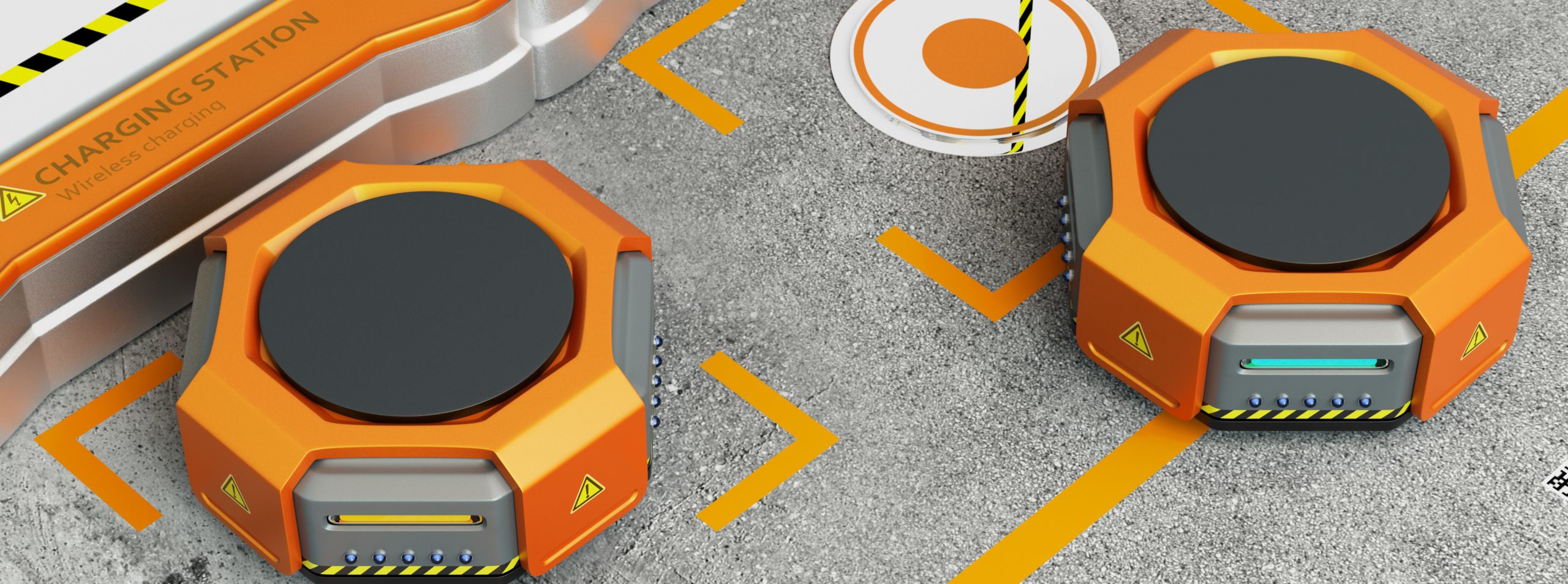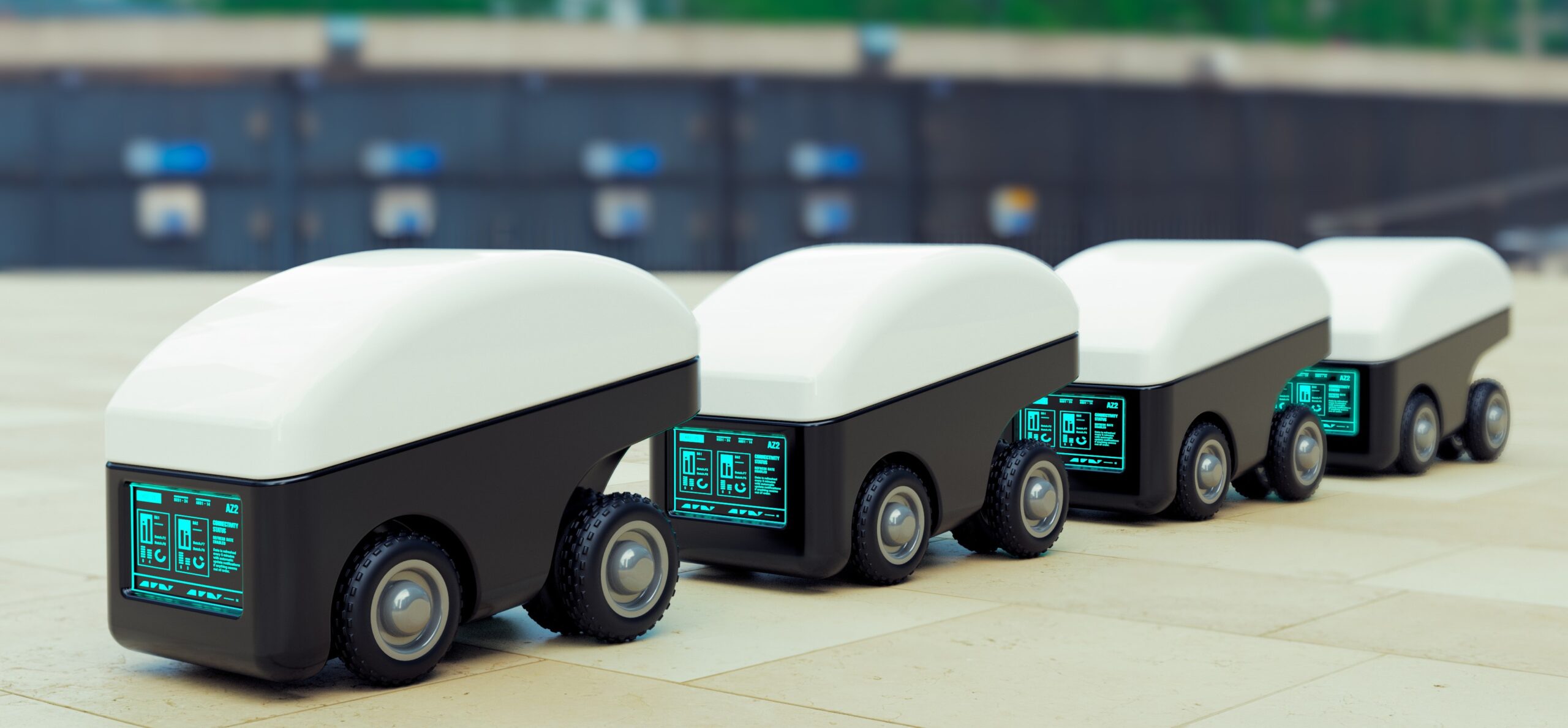
Contact-based charge coupling systems for mobile robotics provide optimal energy efficiency in most circumstances. Outside of hazardous environments, where sparks can lead to serious injury (e.g., flammable gasses), and expensive connectors for high voltage or current applications, contact-based charging is generally more reliable and affordable.
The primary advantage of a wireless charge coupling system is that it easily enables the fully autonomous operation of mobile robots. However, contact-based charging can be performed with similar autonomy via plate-to-plate or sophisticated guided connections.
Contact-based coupling systems can be divided into four categories:
- Manual connection
- Guided plate-to-plate connection
- Automated connector systems
- Battery swapping
Each provides different use case utilities and requires varied technology sophistication. To determine the best solution, original equipment manufacturers (OEMs) and their charging system providers must evaluate the needs of a given mobile robot’s intended use case.
Manual Connections
Although the physical connectors may look different, manual charge coupling follows the same process and principles as the cords and plugs most consumers use for household appliances and personal device charging. Often, simplicity is the optimal choice.
One significant drawback to classic manual connections is that staff must plug and unplug mobile robots with every charge. This requires available personnel and is best served by centralized charging infrastructure, which may be challenging if charging stations are dispersed throughout a facility.
However, that biggest drawback can be less of a concern than you might think.
Deploying mobile robots—like any fleet of vehicles or machinery—requires dedicated personnel to perform management and maintenance. So, your operations should already have people on hand who can ensure mobile robots are appropriately plugged in to charge and unplugged when battery capacity is full.
Guided Plate-to-Plate Connections
Guided plate-to-plate connections provide mobile robot fleet owners and managers with a more sophisticated coupling method. It is likely to achieve optimal solutions for many use cases, particularly low-voltage applications that do not require thick insulation for worker safety.
Mobile robots leveraging guided plate-to-plate technologies will navigate to the charging station and dock themselves so that the unit’s plate connector aligns with the charger’s. Charger-side plates are generally installed on the floor, a wall, or a post at a height that matches the position of the unit-side plate. Because the plates tend to be quite large and have their conductive metal attachment points spaced out, docking is not especially difficult.
Once the mobile robot is docked, the coupling is complete—and charging begins.
Guided plate-to-plate systems are already in use and provide significant advantages (i.e., another significant step toward affordable autonomy) without leading to cost hikes for OEMs or their customers.
Automated Connector Systems
Automated connector systems are generally the most complex, sophisticated, and expensive contact-based charge coupling solutions. They can be placed on either the mobile robot or the charging station, with the latter preserving additional on-board space.
These systems require extensive configuration and AI-assisted guidance to perform the contact-based connection themselves. Once a mobile robot arrives at a charging station, it must dock in perfect alignment to facilitate this type of charge coupling.
Developing the technologies that facilitate automated connector systems can be costly between research, design, development, testing, and launch. However, many of these systems are already in use, diminishing OEMs’ barriers to adoption. Some even leverage built-in DC-DC converters or actuators driven by 12V DC power to simplify operations further.
The most challenging effort is creating a guidance system capable of operating along three axes to locate and connect to the charging station with fine-tuned precision.
Among the different contact-based charge coupling technologies, this method is particularly dangerous to workers in hazardous and flammable conditions. System misalignment errors for mobile robots could lead to an exposed spark capable of causing severe injury or death to nearby workers. So its convenience must be weighed against environmental factors.
Battery Swapping
Traditionally, battery swapping was one of the necessary management pains due to the limitations of lead-acid batteries. Lead-acid batteries cannot be discharged as much as lithium batteries, tend to reach high temperatures during their use, and take a long time to charge.
As a result, most fleet managers were required to keep extra batteries to rotate through charging, usage, and cooldown stages during daily operations. And cumbersome battery management also required dedicating a portion of facility space to enable this effort.
Although lithium batteries do not need to be swapped, your operations may still benefit from this method depending on your use cases. The most applicable scenarios are those relying on high-duty cycles that may not allow enough time for batteries to sufficiently recharge before the mobile robots are needed again (e.g., 24/7 operations).
Battery swapping is relatively simple in practice:
- The depleted battery is removed after the mobile robot docks at the appropriate station.
- A fully charged battery is installed on the mobile robot, which then returns to work immediately.
- The removed battery charges while the mobile robot performs its next tasks and is swapped back in when needed to create a constant rotation.
Depending on the OEM’s investment in sophisticated battery swapping technology, the process can range from fully manual to entirely automated—but costs will obviously scale accordingly.
Common Advantages Across All Contact-Based Charge Coupling Systems
Compared to wireless charge coupling systems, some contact-based solutions require available staff to perform manual tasks. However, outside of environmental factors that prohibit contact-based charge coupling or specialty applications with extremely high voltages or currents (requiring costly parts), the need for manual intervention is the only true drawback.
As mentioned above, fleet owners will already need to ensure available management personnel is on-site to oversee the mobile robots’ general usage.
Contact-Based for Energy Efficiency
In a direct head-to-head comparison between contact-based and wireless charge coupling designs, the biggest advantage the former provides is retaining greater efficiency over the latter.
Wireless coupling is less efficient due to transmission via an electromagnetic field, thus bearing greater susceptibility to loss (i.e., I2R). Depending on the wireless method utilized, the battery on charge will only recover 75-98% as much power as with a contact-based coupling when consuming an equivalent amount of energy.
Communicating Telematics Data
With the exception of the battery swapping method, the other contact-based charge coupling designs all facilitate the transfer of telematics data from battery management systems and chargers. This data allows fleet managers to gain greater insight into the robots’ deployment, maintenance needs, and how to optimize facility-wide workflows.
While telematics data can be transmitted wirelessly, wired connections generally provide greater speed and reliability.
Which Contact-Based Charge Coupling Design is Best?
The best contact-based charge coupling design is entirely based upon the use cases of an OEM’s target market. For example, battery swapping might be ideal if the mobile robots are intended for use in a 24/7 logistics or fulfillment facility. Conversely, investing in guided plate-to-plate or automated connector systems may be preferred if nearly full automation is desired.
OEMs must find and collaborate with industry-leading partners capable of designing, developing, testing, and producing chargers and charge coupling systems that meet their robots’ precise specifications.
[hubspot type=cta portal=8002792 id=438a03e1-b4e5-44fb-90b3-617e18f4b620]




